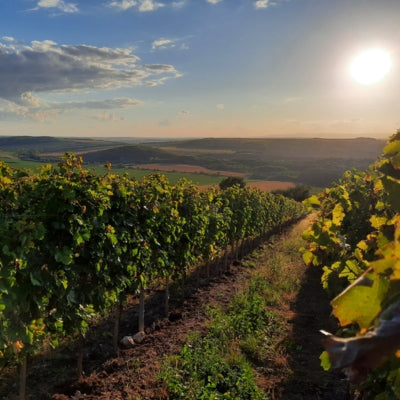
Liquid Gold part IV: What makes Tokaji extraordinary?
In the fourth and final installment of our “Liquid Gold” series, Westgarth Wines wine expert Maurizio Broggi looks at Tokaji’s grape varieties, winemaking and wine styles.
Tokaj is made from unique grape varieties, particularly Furmint, which is by far the most widely planted grape in the region, accounting for over 60% of the vineyards. Furmint is a versatile, late-ripening grape that is prized for its high searing acidity. Its susceptibility to botrytis and capacity to accumulate high sugar levels make Furmint ideal for producing intensely rich, complex, and long-lived Aszú wines. The grape's citrus, apple, and pear notes evolve into tropical fruit, orange marmalade, and mango flavors with the influence of noble rot, complemented by mineral and smoky nuances. As wine ages, it develops honeyed and nutty characteristics.
The second most widely planted grape is Hárslevelű, making up about one fifth of the vineyards. This grape adds a layer of fruitiness and floral aromas, including peach, orange blossom, and hints of honeysuckle. Hárslevelű often supports Furmint in blends, contributing to the aromatic complexity of Tokaji wines. Sárga Muskotály (Muscat Blanc à Petits Grains) is also occasionally added in small proportions.
The harvest and winemaking process of Tokaji
The production of Tokaji Aszú is a labor-intensive process that begins with the selection of botrytized grapes. These shriveled grapes, which have been affected by noble rot, are picked by hand during several passes through the vineyard. Aszú berries are then crushed to create a paste or added directly to fermenting must or base wine. This technique allows for the extraction of the concentrated sugars and flavors from the botrytized grapes.
The sweetness of Tokaji Aszú is traditionally measured in puttonyos — wooden containers used to hold aszú paste. For example, five puttonyos represents a wine with a higher residual sugar content than one made from three puttonyos. The paste is macerated in the base wine for 12–60 hours, allowing for a gentle extraction of flavors before being pressed and clarified. The must is then fermented in small oak barrels, where fermentation can last for several months, depending on conditions.
Traditionally, the oak used for fermentation and aging barrels is Hungarian oak sourced from the Zemplén Mountains. Traditionally, wines were matured in small 136-liter barrels known as gönci, but these have largely been replaced by the larger formats such as 300–500-liter casks to minimize oak influence and better express the wine's terroir. A combination of new and seasoned oak is commonly used. By law, Tokaji Aszú wines must be aged in oak for at least 18 months, although some producers age their wines for a longer time. The wines are typically bottled in the region's distinctive 500 mL clear glass bottles.
Sweetness levels and styles of Tokaji wines
Tokaji wines are known for their varying sweetness levels, with Tokaji Aszú traditionally measured on the puttonyos scale. However, since 2013, this system has been replaced by a standardized minimum residual sugar level for Aszú wines, with a minimum of 120 g/L, equivalent to the former five puttonyos. Wines with lower sugar levels are labeled as Late Harvest or Tokaji Édes Szamorodni, while the rare Eszencia, made from free-run juice of Aszú berries, can have 450 g/L or more of residual sugar. This unique nectar is incredibly viscous, sweet, and concentrated, and it requires a long fermentation process, often lasting decades.
Other Tokaji wines include Late Harvest wines, made without maceration, and Szamorodni, which can be either dry or sweet. Sweet Szamorodni (édes) is aged in oak for at least six months, while dry Szamorodni (száraz) may be aged under flor yeast, contributing to a unique, nutty, apple-like aroma somehow comparable to Vin Jaune or Savagnin "Sous Voile" from the Jura region.
While Tokaj remains renowned for its historic sweet wines, the declining market for these styles has encouraged many producers to also focus on dry wines. In recent decades, these dry expressions — often labeled Tokaji (Dry) Furmint — have grown in prominence, complementing the region's traditional sweet offerings.
Tokaji Aszú and the Tokaj wine region embody the enduring spirit of winemaking traditions and the extraordinary potential of a unique terroir. From its pioneering role in botrytized winemaking to the revival of traditional methods after the fall of communism, the wines of Tokaj continue to captivate wine enthusiasts and collectors with their distinctive styles and profound heritage, solidifying its position as one of Europe's most extraordinary wine regions.
Want to read more? Take a look at some of our other blogs:
Also in News



